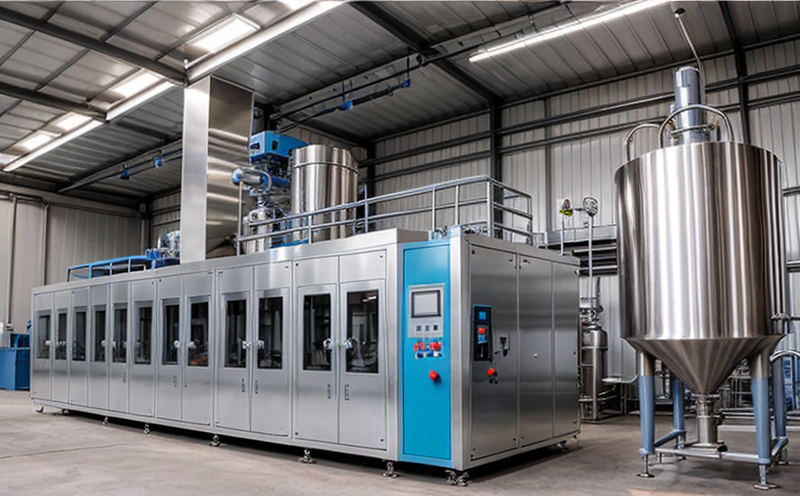Pharmaceutical Manufacturing Equipment Compliance: Ensuring Safety and Efficiency
The pharmaceutical industry is heavily regulated due to the critical nature of its products. Pharmaceutical manufacturing equipment compliance is a top priority for manufacturers as it directly affects the quality and safety of their products. Compliance with regulatory requirements ensures that equipment meets or exceeds international standards, reducing the risk of product contamination, ensuring patient safety, and meeting market expectations.
Equipment in pharmaceutical manufacturing facilities includes various types such as mixers, tanks, and conveyors. These machines are used for blending, storing, and processing raw materials to produce finished goods. Manufacturers must ensure that these pieces of equipment meet or exceed regulatory requirements set by organizations such as the US FDA, European Medicines Agency (EMA), and World Health Organization (WHO). Compliance involves following strict guidelines on design, construction, installation, operation, and maintenance of pharmaceutical manufacturing equipment.
Key Regulatory Bodies
Several key regulatory bodies oversee the compliance of pharmaceutical manufacturing equipment. These include:
US FDA: The US Food and Drug Administration is responsible for regulating the quality, safety, and efficacy of pharmaceuticals in the United States.
EMA: The European Medicines Agency regulates medicines for human use within Europe.
WHO: The World Health Organization sets international standards for pharmaceuticals.
Compliance Requirements
Pharmaceutical manufacturing equipment compliance involves meeting several key requirements. These include:
Design and Construction: Equipment must be designed, constructed, and manufactured with quality materials to minimize contamination risks.
Cleaning and Sanitization: Regular cleaning and sanitization procedures must be implemented to prevent cross-contamination between batches.
Validation and Verification: Manufacturers must validate and verify the performance of equipment to ensure it operates as intended.
Equipment Selection and Installation
Proper selection and installation of pharmaceutical manufacturing equipment are crucial for compliance. Key considerations include:
Material Compatibility: Equipment materials should be compatible with products being manufactured.
Installation Instructions: Equipment should come with clear installation instructions to minimize the risk of human error.
Operator Training: Operators must receive comprehensive training on equipment operation and maintenance.
Compliance in Practice
In practice, pharmaceutical manufacturing equipment compliance involves several steps. These include:
1.
Equipment Design and Development: Manufacturers design and develop equipment that meets regulatory requirements.
2.
Installation and Commissioning: Equipment is installed and commissioned according to manufacturers instructions.
3.
Validation and Verification: Manufacturers validate and verify the performance of equipment using standard operating procedures (SOPs).
4.
Regular Maintenance: Regular maintenance, cleaning, and sanitization are performed to maintain compliance.
Challenges in Compliance
Despite the importance of pharmaceutical manufacturing equipment compliance, manufacturers often face challenges. These include:
Equipment Cost: High-quality, compliant equipment can be expensive.
Training and Operator Competence: Ensuring operators have the necessary skills and knowledge can be challenging.
Regulatory Changes: Manufacturers must stay up-to-date with changing regulatory requirements.
Future Directions
The future of pharmaceutical manufacturing equipment compliance will likely involve increased automation and digitalization. Key trends include:
Internet of Things (IoT): Real-time monitoring and data analysis to improve efficiency and reduce errors.
Artificial Intelligence (AI): Predictive maintenance and automated decision-making to enhance compliance.
QA
1. What are the key regulatory bodies responsible for overseeing pharmaceutical manufacturing equipment compliance?
US FDA, EMA, and WHO.
2. What are the main requirements for pharmaceutical manufacturing equipment compliance?
Design and construction, cleaning and sanitization, validation and verification.
3. Why is proper selection and installation of equipment crucial for compliance?
To minimize contamination risks and ensure correct operation.
4. How do manufacturers ensure compliance in practice?
Through a series of steps including design, installation, commissioning, validation, and regular maintenance.
5. What are some common challenges manufacturers face when implementing compliance measures?
High equipment cost, operator training and competence, regulatory changes.
6. What trends are expected to shape the future of pharmaceutical manufacturing equipment compliance?
Increased automation and digitalization through IoT and AI technologies.
Pharmaceutical manufacturing equipment compliance is a critical aspect of ensuring patient safety and meeting market expectations. Manufacturers must stay up-to-date with changing regulatory requirements, invest in high-quality equipment, and provide adequate operator training to maintain compliance.

































